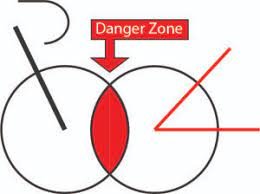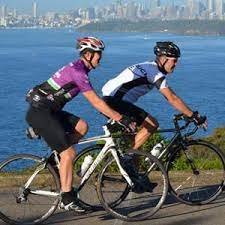The Seven Commandments of Group Riding Etiquette
Bunch ride etiquette for those new to group rides, and those who want a refresher
Learning how to ride in a bunch isn’t as simple as hopping on your bike and heading out with other people, it’s a skill and as such, should be learned in a safe environment and guided by a reliable mentor. Poor bunch riding skills puts the safety of the entire group at stake, and you may find yourself on the outer if you ride erratically or take unnecessary risks.
Here we are discussing some key tenets of group riding to make for fun, efficient and safe rides with other people. After all, sharing cycling with friends is often the best way to do it!
Though Shalt look ahead
While this seems really obvious, for newer riders or those struggling, vision is one of the first thing that needs addressing. Keeping your head up and looking as far ahead as you can, even if located behind other riders, helps see upcoming obstacles and take evasive action if required. If you’re hurting badly as the pace is high, it’s very easy to start looking at your bicycles stem, this is very risky! You’re better off riding by yourself than staring at your stem and being oblivious to the dangers around you.
For newer riders, practicing some simple tasks solo can be incredibly important. Things like clipping into your pedals, indicating left and right, and taking a drink should all be able to be done while keeping your eyes forward. Can you do this? If not, take some time in a park or other safe environment to practice these skills before heading out in a group.
2. Though Shalt not cross wheels
If you’re riding in an orderly group (what we should all be aiming for!) there are a few key tenets, and not crossing over wheels is a critical one that, if not followed, can and will lead to crashes. When riding in a group, either single file or two abreast, it’s important that if riding behind another one, you don’t sneak your front wheel in front of the rear wheel in front. While riding close to the rider in front will lead to a great aerodynamic advantage, you want to leave a safe gap of around 30cm to the wheel in front. Is this super close? Yes, and that’s why we keep our eyes up and brakes covered.
Cycling’s least safe Venn diagram, the wheel cross. Lave a safe gap to the wheel in front!
3. Though Shalt not half-wheel
Half-wheeling, while a cousin to crossing wheels, is not the same thing. Half wheeling, rather than being unsafe, is more of a social faux pas and can be seen as quite rude. What is half-wheeling? Well imagine you’re on a ride with a friend on a bike path or road and you’re two abreast, side by side. Half wheeling is where one rider is pushing the pace consistently, sitting half a bike length or a wheel length ahead of the other rider. It’s not social: it makes it hard to talk, and it’s quite rude: you’re obviously riding faster than the other rider. Plus, if you’re in a large group, all riders behind you end up half wheeling their partners.
It doesn’t make you look fast or strong, it just makes you look unaware of cycling etiquette.
Looking for an image of half-wheeling, I found this cracker of a shot (or cluster of 30 pixels) illustrates what half wheeling is. Wouldn’t be annoying to talk to your friend if he’s half a bike in front of you?
4. Thou Shalt signal your intent
If you’re turning in a group left or right, let the group know by telling the rider beside you (if riding two abreast) and motioning with your hand left or right. Sudden swerving leads to crashing, so make sure you indicate well ahead of the turn.
People waving their arms about on the bike? They’re probably telling you something. Check out this list for a better understanding.
5. Thought Shalt not ride erratically
In addition to turning, group riding skills also require calling out or motioning to obstacles (potholes, rubbish, glass on road, rogue goannas…), as well as braking sensibly without any erratic start and stops. Smooth riding is the key here, and as such feathering (gently pulling) both brakes always wins out compared to pulling a fistful of brake, which can lead to skidding and crashing, not to mention making the rider behind have to react with emergency braking. Likewise, sitting on a well fitted bike should mean that you’re not lurching side to side with each pedal stroke (if you’re not sure or you think this is you, it could be time for a bike fit!), and practice holding your bike steady when rising from the saddle, especially up a hill. It’s very easy to shoot your bike backwards when standing up, practice smoothly climbing without rocketing your bike out behind you.
6. Thou Shalt hold thy line and Thou shalt not chop
Another variation, and specific iteration of point 5 (“thou shalt not ride erratically”), is “thou shalt hold thy line” and ‘Thou shalt not chop”. What does this mean? During a group ride, one shouldn’t deviate from the line they are on for example swing out extra wide for a corner in a group or swerve to avoid things, however there is another layer to ‘holding your line’ and it relates specifically to high speed riding and/or sprinting, in which is is not only bad etiquette, but very unsafe to deviate across riders or ‘cut someone off’ (aka: ‘doing a mad chop’).
While the rider of the bike is in charge of protecting their front wheel (not crossing wheels etc!) It is every rider’s responsibility to move safely within the group, meaning that if they’re looking to move into a space, it’s only done at a time when it’s safe to do so. Likewise, if you’re in a sprint it can be easy to get all het up with the excitement and adrenaline of the moment and do stupid stuff. A good sprinter will be cognisant of all the other riders and movement around them and will make their move at the right time, sprinting safely (and in a straight line!) to the finish.
7. Though Shalt not engage in commuter racing
Commuter racing is the act of treating every other cyclist as a competitor like the Tour de France. It’s easy to get excited about these imaginary races, but treating every ride as a race gets old really quick, is annoying for everyone, and ultimately isn’t a very effective training technique (supposing that you’re chasing a training adaptation). Leave the ego at home and just ride your bike! Big props if you say hi to people. Big boo if you chase down people then ignore them as you blast past! Even bigger boo if the riders gender triggers this chasing behaviour.
Is this guys commuter racing? Hard to tell but I would guess a yes by his excitement in overtaking women on townie bikes.




